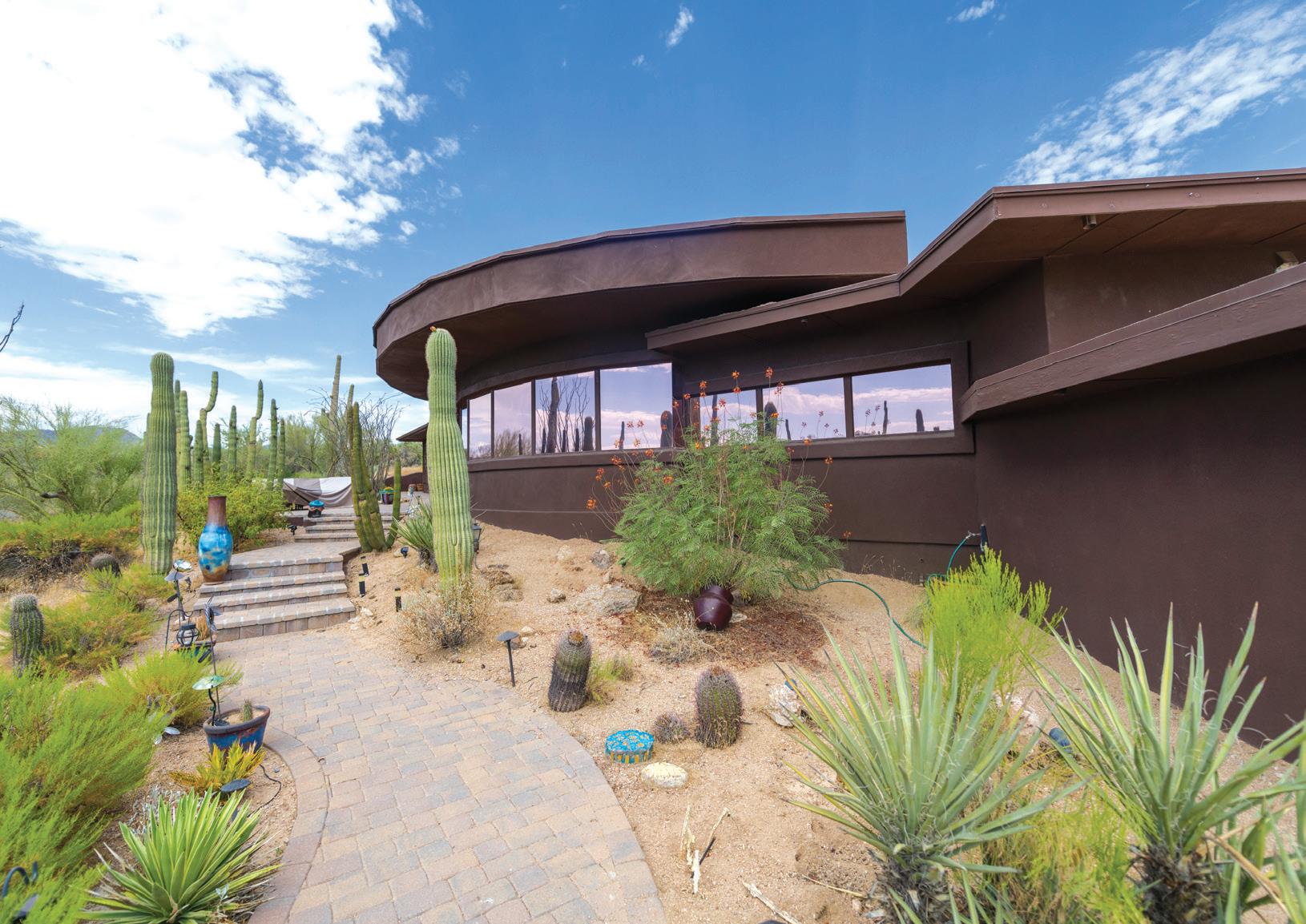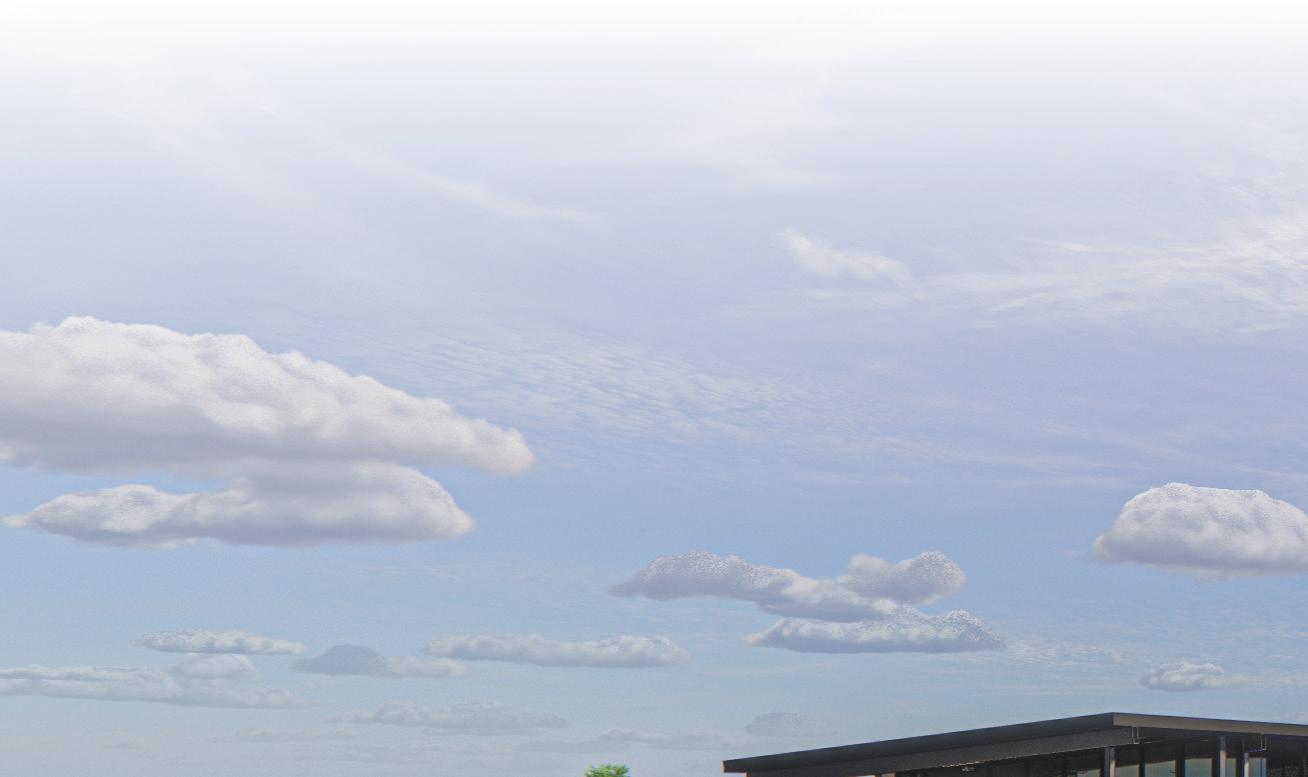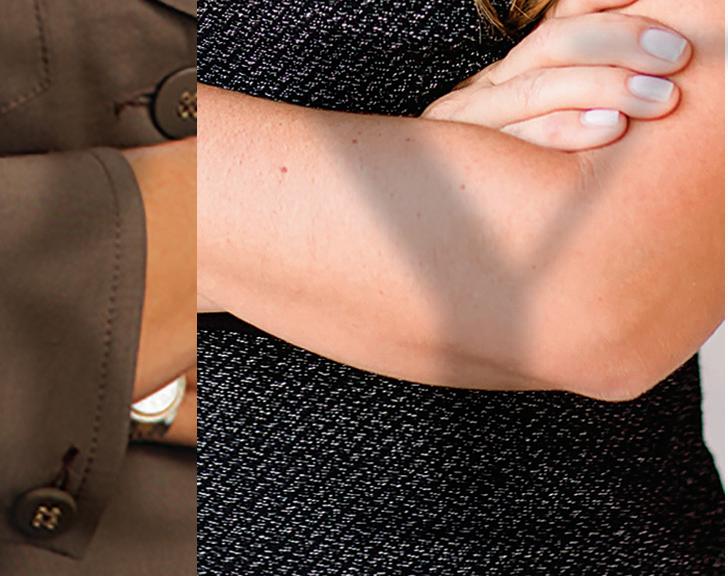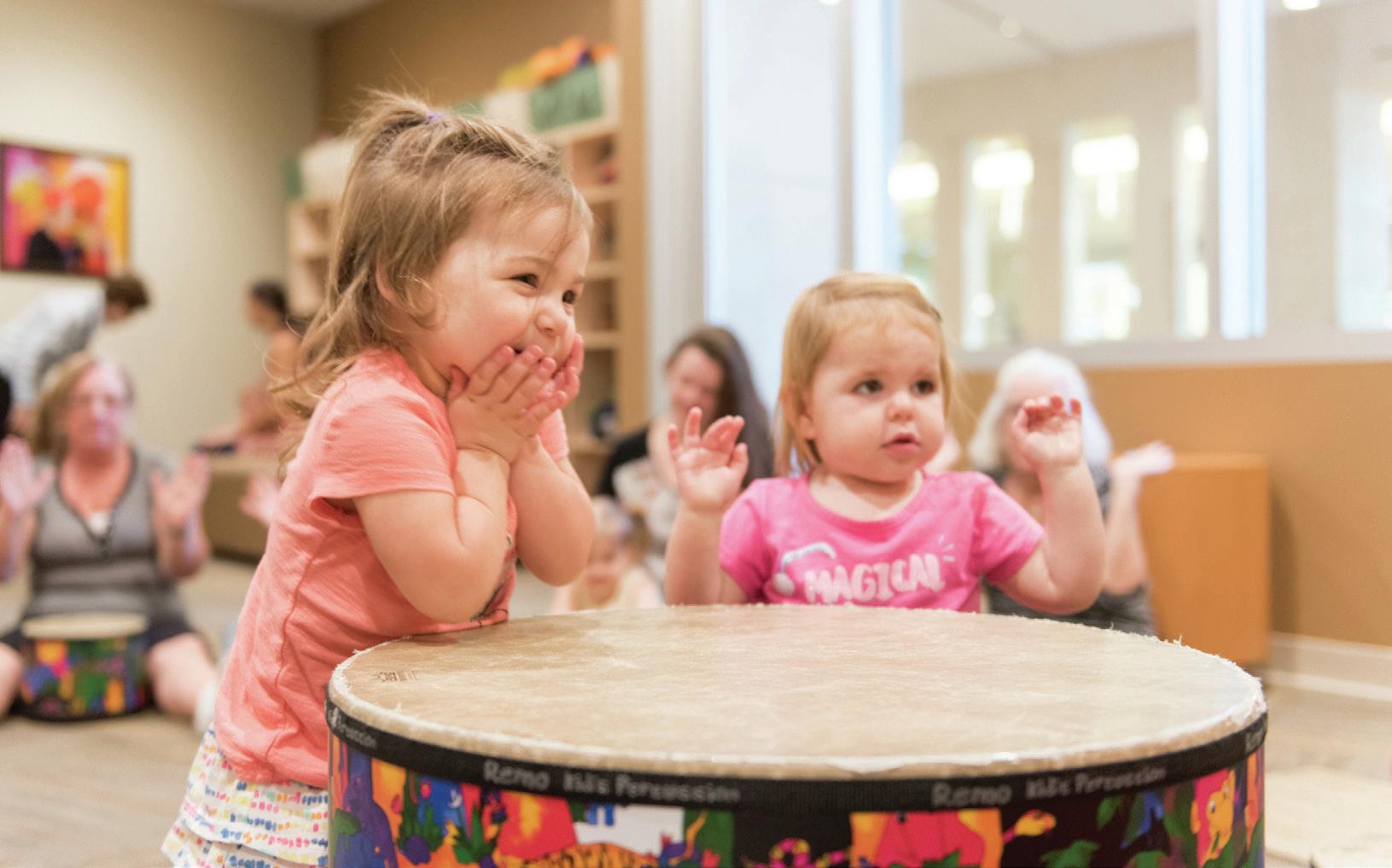
8 minute read
Historic Move
Vince D’Aliesio in his Carefree home, a masterpiece by architect Gerry Jones. (Photo by Pablo Robles)
Vince D’Aliesio named Cave Creek Museum board president
By Christina Fuoco-Karasinski
Vince D’Aliesio has, admittedly, done a little bit of everything. He’s worked with the courts, hosted radio shows and coached high school and college football.
Now he’s the Cave Creek Museum board of directors president. The Cave Creek Museum recently celebrated its 50th anniversary.
“Vince brings a combination of academic and civic experience that shapes and guides our institution in a thoughtful-yet-decisive way,” says Karri Porter Brace, executive director of the Cave Creek Museum.
“From his experience with the Arizona State University coaching staff to advising youth, from his participation as a councilman of Carefree Town Council to historic preservation, Vince is a steadying influence that aligns all our people and efforts in forward motion.”
D’Aliesio grew up in the Valley and always dreamed of retiring in Carefree.
“It ended up happening sooner than we thought,” he says with a laugh. “I wanted to get involved in the community. My first foray into it was helping out at festivals and things on the weekend. Two years ago, I was elected to council.”
His philanthropic and volunteerism was sparked by his Carefree home. The Gerry Jones home was the first built in the town.
“We found out after we bought it,” he says. “It’s been a whirlwind. We fell in love with the house and the community. The home was built in 1959. I wake up every day and go to bed every night imagining what Gerry’s vision was back then.
“The panoramic view of Black Mountain makes you appreciate the culture and the history of the community that much more.”
D’Aliesio’s home was featured on a Gerry Jones home tour that benefited the museum. Jones visited the home and shared the history of the property and the land.
“This was goat farms way back when,” he says. “It reverberated through the rest of the community. The house was built around the mountain. There was no blowing anything up. Whatever’s there, they put the house on it. There’s stone inside and outside of it.”
The tour gave D’Aliesio his first fix of the community’s history. The board approached him to join, and within a couple months, he was asked to be the vice president. Soon after that, he assumed the board presidency.
“It’s been an amazing experience,” he says. “There are a lot of people who haven’t heard of the Cave Creek Museum. It’s
based in Cave Creek and been around for 50 years, but it services all of the Desert Foothills.
“It’s the only historical museum in Metro Phoenix north of the 101. Our goal is to continue to make it a museum that serves all of the communities. We want it to be a place where people see historical artifacts and celebrate contemporary art and architecture.”
Ideally, he’d like to see the museum move to a more visible space with a contemporary look and feel. The facility also boasts a working stamp mill.
“It’s an incredible blend of pioneering and cowboy mixed with the contemporary art,” he says. “I’m just so amazed that I get to be a part of this amazing place.”
He’s also hoping the Gerry Jones Home Tour will return and, perhaps, hosting Paolo Soleri lectures.
“There’s also Bike Week. There’s a big motorcycle influence here,” he adds. “It’s not just a museum of historical artifacts. We want people to appreciate the arts and the modern, contemporary architecture.”
Nicknamed “Coach D” and the host of the “JV Sports Show” from 9 to 10 a.m. on KDUS AM 1060, D’Aliesio grew up in Central Phoenix, spending nearly half his adult life coaching football.
He was a team captain and offensive lineman at Camelback High in the 1980s and later played football at Scottsdale

Community College. He later attended Paradise Valley Community College.
D’Aliesio returned to Camelback as an unpaid freshman assistant as a college undergrad for his first football coaching job for the late Pete Kellen, later graduated from ASU, and continued this journey through eight high schools and three colleges, including ASU.
He has a Pac-10 championship ring
Vince D’Aliesio’s home in Carefree was built around the mountain. (Photo by Pablo Robles) as a result of spending two seasons as a graduate assistant coach under the late Bruce Snyder at ASU in 1996.
“That was the year we went to the Rose Bowl,” says D’Aliesio, who has three teenagers with his wife, Cheryl.
He earned a master’s degree in education from NAU and, in better times, is the color commentator for Ottawa University NAIA Arizona Football and does play by play for the men’s and women’s basketball programs. He also does color commentary for the Hohokam Junior College Athletic Conference Football teams and is the PA announcer for Camelback and Campo Verde high schools.
The benefit of working with the Cave Creek Museum is being surrounded “by great people,” he says.
“That makes it that much easier,” he adds. “It’s a great staff all the way around. During this pandemic, the museum is going through a facelift, so we’ve been shut down during the pandemic.
“I just have a passion for being around people. The Desert Foothills is the most beautiful, amazing place. The people here a really great, and I’m not just talking about Carefree or Cave Creek—it’s all of the Desert Foothills.”

FRESH • SCHOOLS
Hohokam Rebuild


By Alison Bailin Batz

Hohokam Elementary’s new cafeteria space will connect to a new physical education building. (Rendering courtesy SPS+ Architects)
Hohokam Elementary School is undergoing a year-long update to revitalize an important piece of Scottsdale’s history.
“Hohokam Elementary School was originally constructed in 1959 and designed by renowned architect Ralph Haver,” says Vicente Terán of CHASSE Building Team, which is working with the school district and SPS+ Architects on the build.
According to Modern Phoenix’s Ralph Haver archive, the sloped roofl ine, beamed ceilings and ribbon windows are all typical hallmarks of his preferred building style, echoing what he did with local single-family homes as well.
“Not only are Haver designs beloved, but many people who still live in the community once attended Hohokam themselves, so they were personally invested in anything that might happen with the school, especially a modernization,” says Darlene Cadman of SPS+ Architects.
As a result, before any plans were even developed to modernize the school, the Scottsdale Unifi ed School District, along with SPS+, CHASSE and others, worked directly with faculty and administrators as well as members of the neighborhood via public meetings to determine the best path forward.
Stakeholders and the building team determined that the small schoolhouse

buildings and courtyard spaces would stay, preserving the historical importance of the property as well as the lush greenery that has been growing proudly in the space for the past seven decades.
“One area that we certainly needed to address was the administration building and cafeteria, as well as indoor and outdoor physical education and recreation space,” says Cadman, who worked with CHASSE on a paperless 3D model of the school and its potential new plans.
Th e new plan will move the administration and lobby of the school to the front of the property, which will help with security and check-ins by visiting guests as well as parents and guardians. It also adds a shaded outdoor amphitheater where children can gather and take advantage of the Valley’s 300-plus days of sun.
“A new cafeteria space is also in development, which will connect to a new PE building and be near the amphitheater so together they can serve as the heart of the school,” says Terán, noting a new roof developed in Haver’s style is also part of the new plan. “All materials and colors, even those being used on the roof and windows, are mid-century modern in homage to Haver’s preferred style including brick, unpainted blocks, metal accents and more.”
Other upgrades—including propertywide Wi-Fi, upgraded insulation to new and


existing buildings, and sweeping upgrades to all mechanical and electrical systems—are also in the new plans. Design also takes modern ergonomics into account.
“Th e fi nal element for us was fi nding a way we could get this all done in a year,” Teran says. “It sounds daunting, but with our partners and a lot of communication and planning, we are going to make it happen.”
Th e team utilizes CHASSE Lean to ensure it keeps costs down and gets done on time.
“CHASSE Lean is a collaborative process to achieve maximum value on all of our projects while minimizing project waste such as cost, material, time and eff ort,” Terán says.
From the baseline construction schedule prepared during the design phase, CHASSE Building Team invites the entire project community to participate in a Pull Planning Session. Using a graph schedule, each community member can map out their task, what they need to start, how many days the task will take, and how many team members are involved. Th is innovative approach is very diff erent than typical construction scheduling methods.
“Th e end result is a project schedule the community collaboratively creates, agrees upon and takes ownership of,” Terán says. “And when this school is complete, it will be something we will all be proud to have had a role in creating.”
SHE MAKES HER STORY




orth Valley Magazine spoke with female entrepreneurs from diverse industries to get their take on their paths to success. Th ese businesswomen discuss their pivotal moments and decisions that changed the trajectories of their careers.









